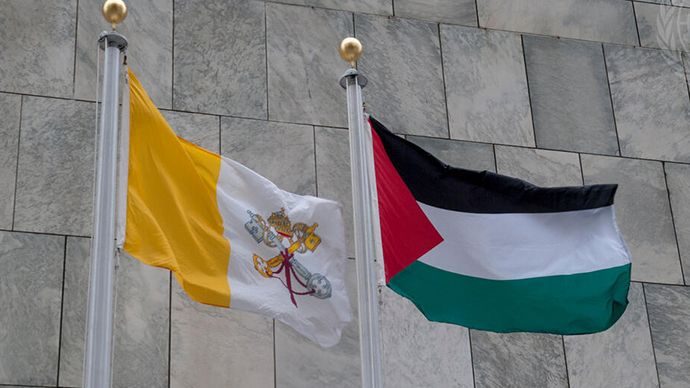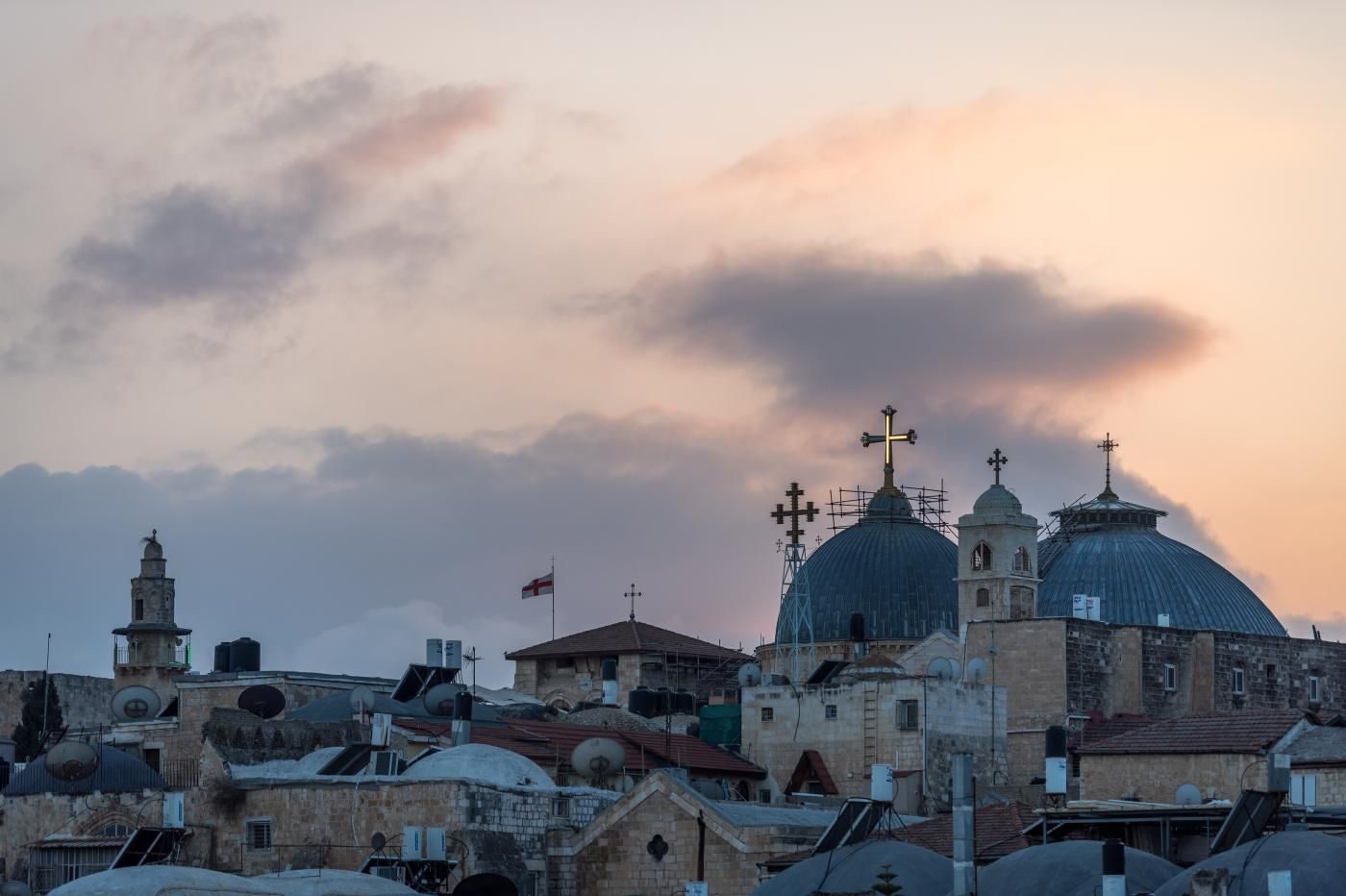The following is a summary of the content of the Agreement between the Holy See and the State of Palestine, based on the text provided by L’Osservatore Romano.
The Agreement has a specific nature that takes into account the legal and political situations that surround the conflict, and the rules that have gradually built up over the centuries.
The Preamble, which refers to current international law, frames a series of key points: the self-determination of the Palestinian people; the objective of the two-state solution; the meaning, not only symbolic, of Jerusalem, in terms of its holy character for Jews, Christians and Muslims and its universal religious and cultural value as heritage for all humanity; and the Holy See’s interests in the Holy Land.
The two Parties, considering their mutual daily relations, indicate in the negotiated agreement a way of working, together and separately, not only in defining the condition of the Catholic Church in Palestine but also for the good of people and institutions. The Agreement is therefore an instrument for use in the process of attaining that “just and lasting” peace that may be the result only of an agreement between the Palestinian and Israeli authorities. The idea that the future of the Holy Land rests in the hands of the actors present there is supported by the Holy See’s wish to exercise her “educational, spiritual and moral mission”, but – with reference to and amplifying the formula of Article 24 of the Lateran Pact, the Holy See “shall take no part in any temporal rivalries between other States, nor in any international congresses called to settle such matters, save and except in the event of such parties making a mutual appeal to the pacific mission of the Holy See”.
Chapter 2 of the Agreement relates to the theme of freedom of worship and conscience, exploring its various dimensions and content, ranging from the civil effects of canonical marriage, the “customary facilities” for the different rites, respect for feast days and the right of Christians who work in public offices to be able comply with the obligation to attend Sunday Mass, religious assistance for the armed forces and prisoners, and the right of parents to impart a “religious and moral” education to their children. The explicit acknowledgement of authentic conscientious objection as a practice consistent with the right of freedom of thought, belief and religion is notable for its current relevance.
The signing of the Agreement urges the Parties to look to the future without forgetting history and those events that, on political and legal levels, have outlined the condition, social fabric and normative order of Palestine, and within this, the action of the Church, as may be seen in the following chapters:
Chapter 3, recognising the legal personality and right to self-organisation of the Church, protects its internal order, the freedom to confer ecclesiastical office, and the exemption of clergy from obligatory personal service such as military service, etc. Confirmation is given of the competence, as stipulated by Palestinian law, of ecclesiastical tribunals to exercise civil jurisdiction. The issue, further clarified in chapter 4, also relates to matters such as marriage, filiation and adoption, following the personal status of Christians in the Holy Land.
Chapter 5, starting from the regime of the “Status Quo”, lists the nature and typology of the Holy Places. The concept of holiness – from which that of religious rights derives – is posited as the source of the obligation of the civil authorities to respect for the Holy Places the exclusive authority and canonical jurisdiction of the Catholic Church, except in the case of joint actions to the contrary. The issue is linked to freedom of worship and the necessary guarantees for pilgrimages and structures offering hospitality to pilgrims.
Chapter 6 guarantees the Church’s right to work in educational, social, charitable and communications sectors, and regulates the relationship with the Palestinian legal system. This is accompanied by general regulations on the freedom to receive funds and the discretion appropriate to ecclesiastical institutions with regard to their function and personnel.
Chapter 7 is dedicated entirely to Church property and the special fiscal regime applicable to them, inspired by functional criteria of non-liability, issues which due to their direct link to the local situation and legislation will be the object of further negotiations and agreements.
The participation of the Palestinian Catholic community in the lengthy negotiations, which began in a systematic fashion in 2010, gave the Agreement an added value. The local Church has been shown to be an effective agent, providing a valuable contribution not only towards the consolidation of the ecclesial reality, but also to the image of Palestine and the Holy Land as a whole.
Source: VIS – Vatican Information Service







